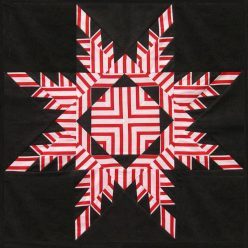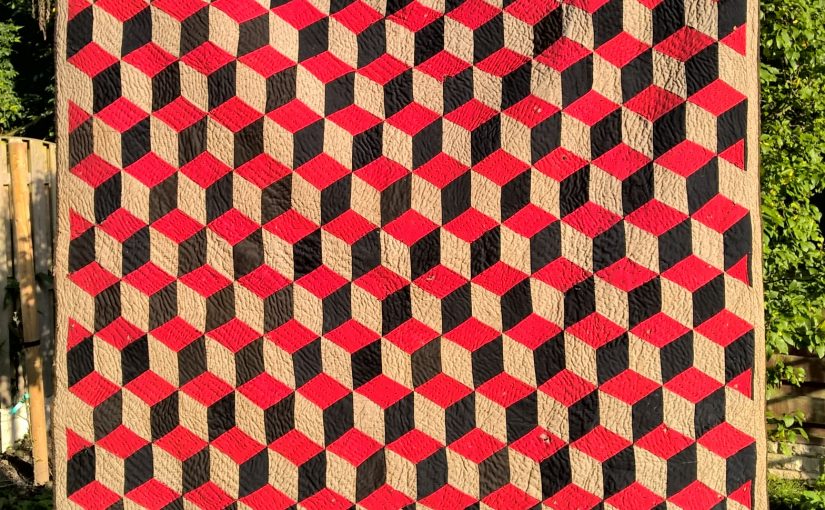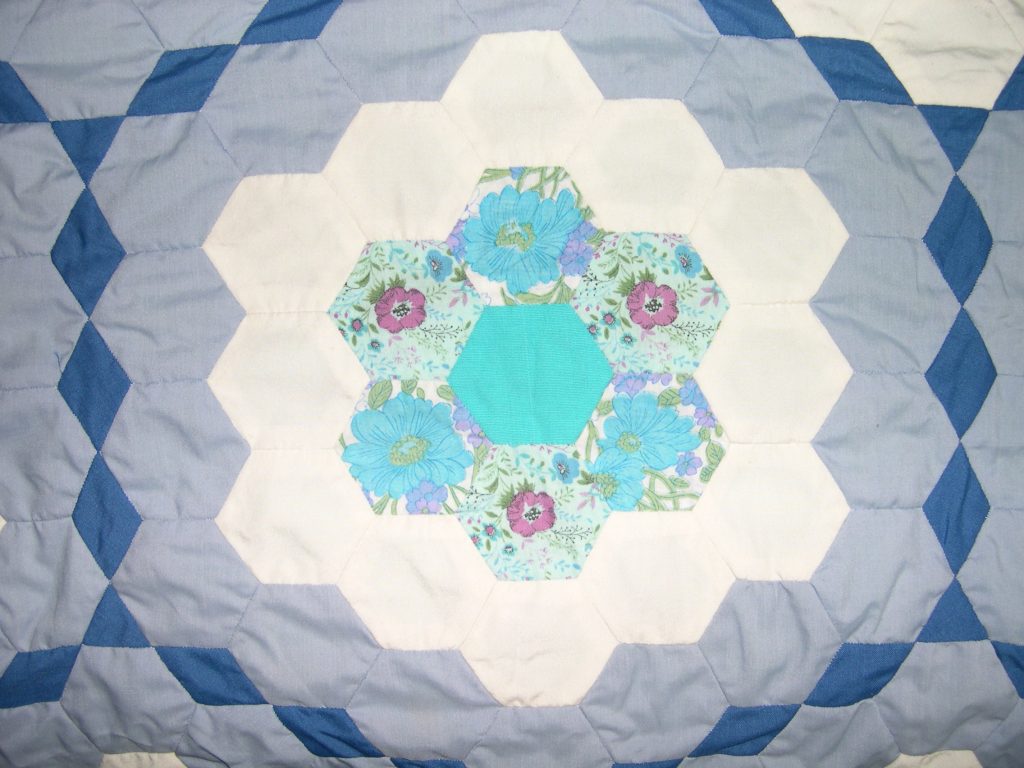Quilts have been made, not only for warmth, but for their decorative qualities (and for the maker’s personal satisfaction) for several hundred years.
British antique quilts have distinctive styles which are largely different from the American “block” style of patchwork. This page gives a quick summary of the main types, and links to further sections where you can learn more and see examples from my collection:
If you would be interested to learn about individual quilts from my Collection in more detail, why not come to my online Heritage Quilt Club, or purchase access to study videos. Look in the Antique Quilt Study section of the online shop.
Patchwork
British patchwork tended to be Mosaic (an allover design made of small geometric shapes, usually pieced over papers) or Frame quilts (similar to Medallion quilts), where a succession of pieced borders surround a central block.
Mosaic patchwork
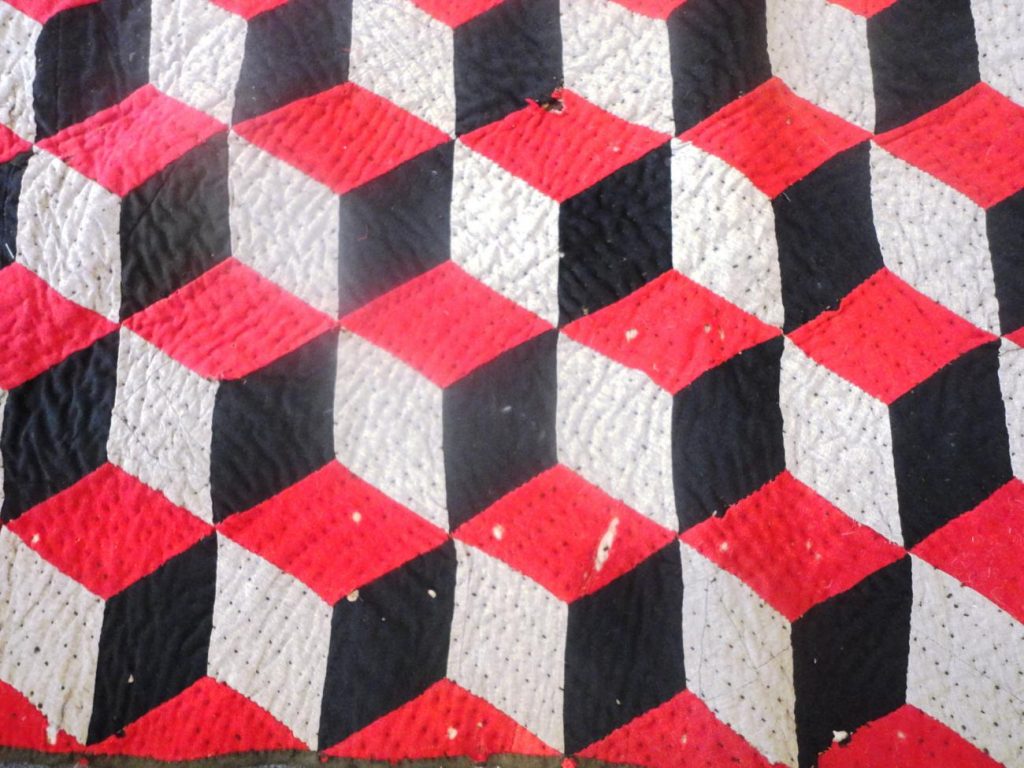
Mosaic patchwork may be made with a single shape, such as a diamond, square, equilateral triangle or hexagon.
This example, made from wool and linen is very striking in its simplicity.
Many designs however, use more than one shape to form a more complex design. Hexagons are used with diamonds in this twentieth century coverlet
The stitching technique over papers is often known as English paper piecing, but it is found in many other countries too.
See more details of these, and other quilts using Mosaic patchwork by clicking the photos or the link.
Frame quilts
In Frame quilts, pieced borders (which may be narrow or quite wide) are arranged around a central unit.
This is an example of a Welsh frame quilt, dating from the end of the nineteenth century.
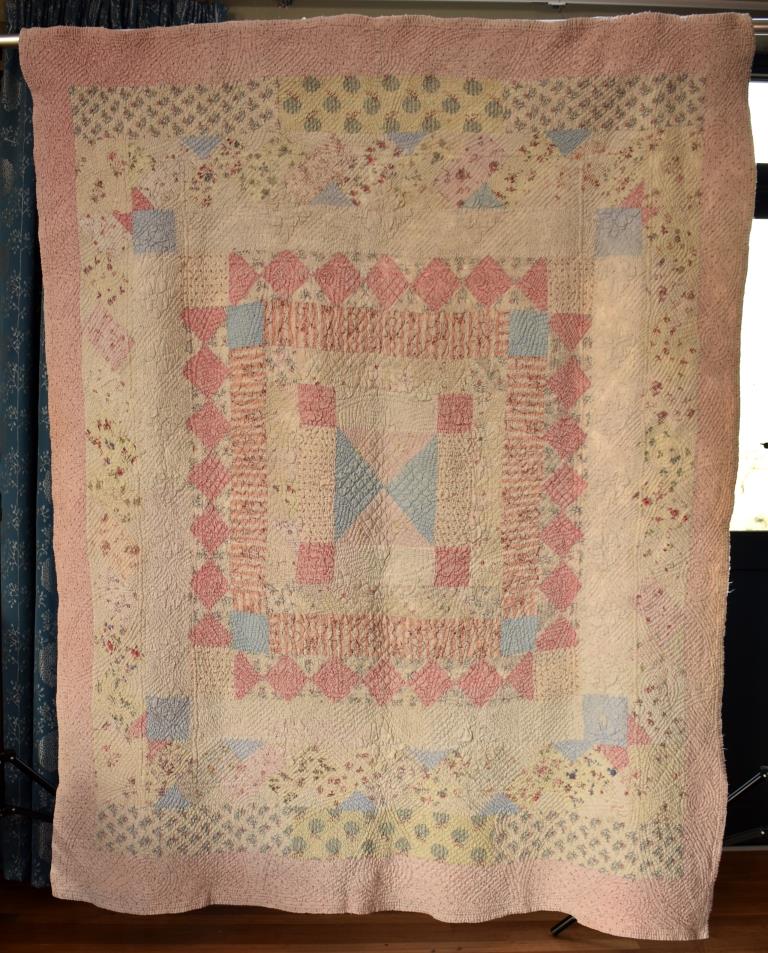
A lovely example from end of the eighteenth century is the Dorset Frame Coverlet.
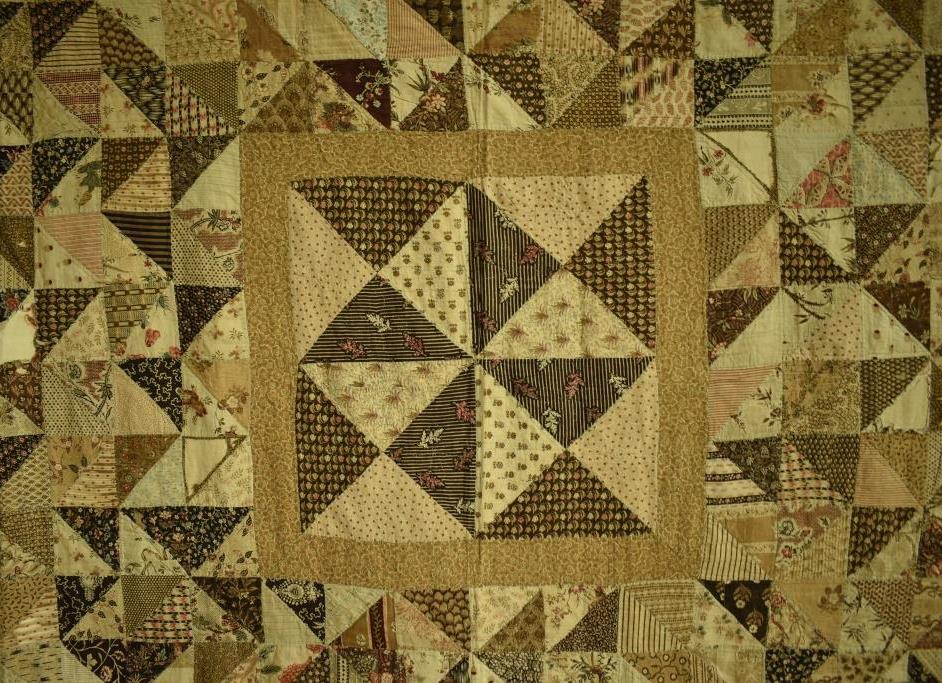
For more information and pictures of frame quilts, click on the link.
Wholecloth
Many British quilts were not pieced from small scraps of fabric, but used the quilting stitch alone to create the design on Wholecloth quilts.
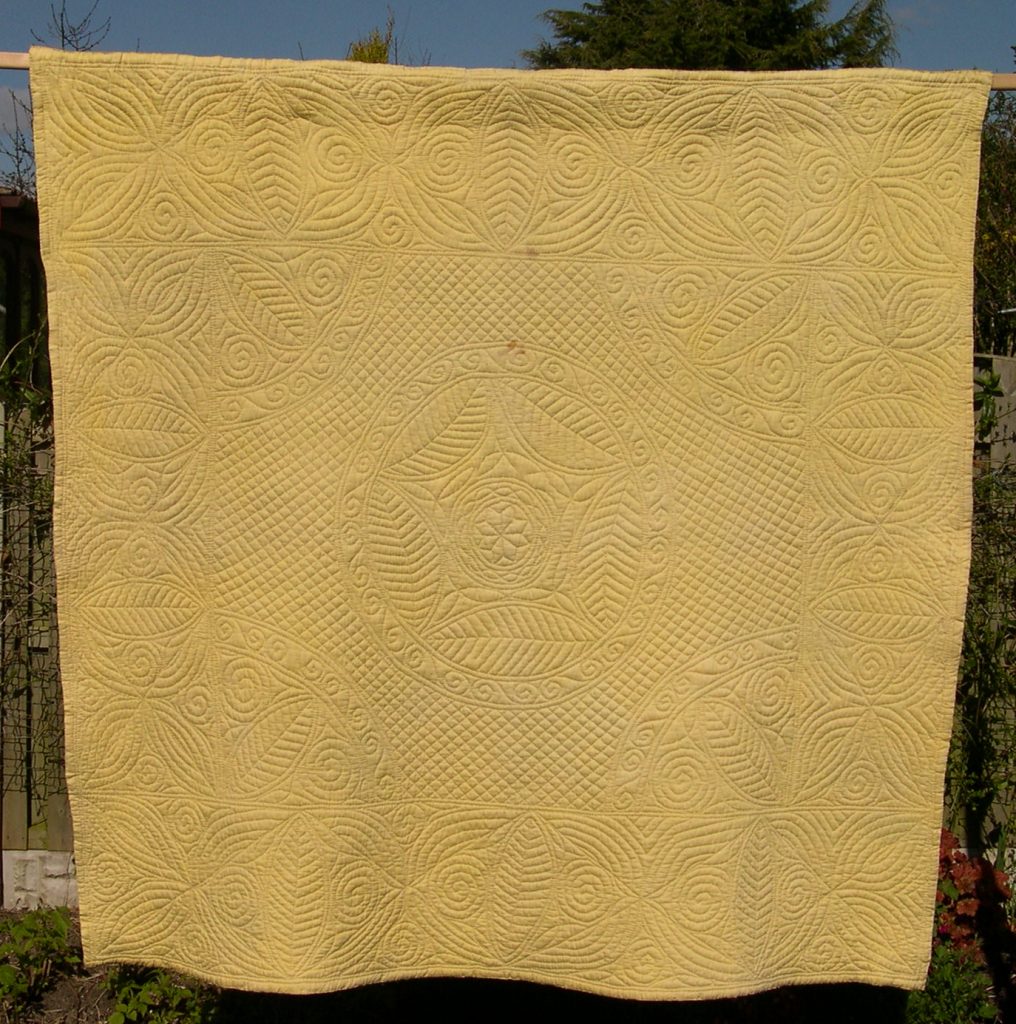
The wholecloth above was made in Pembrokeshire (South West Wales) at the end of the nineteenth century.
The quilt below was made in the North East of England for a wedding in 1902.
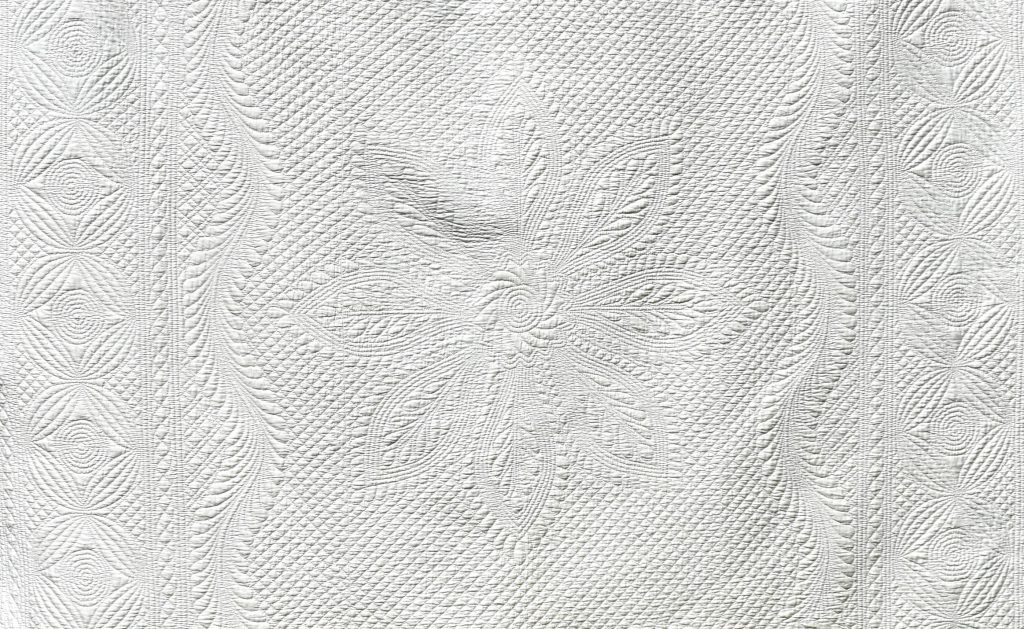
To learn more about the regional styles found in different parts of the UK, go to the Wholecloths page.
Strippy quilts
Strippy quilts were a very popular style during the late nineteenth and early twentieth centuries. Made of alternating long strips of fabric, the quilting patterns run along the strips, making them relatively quick and easy to mark and stitch.
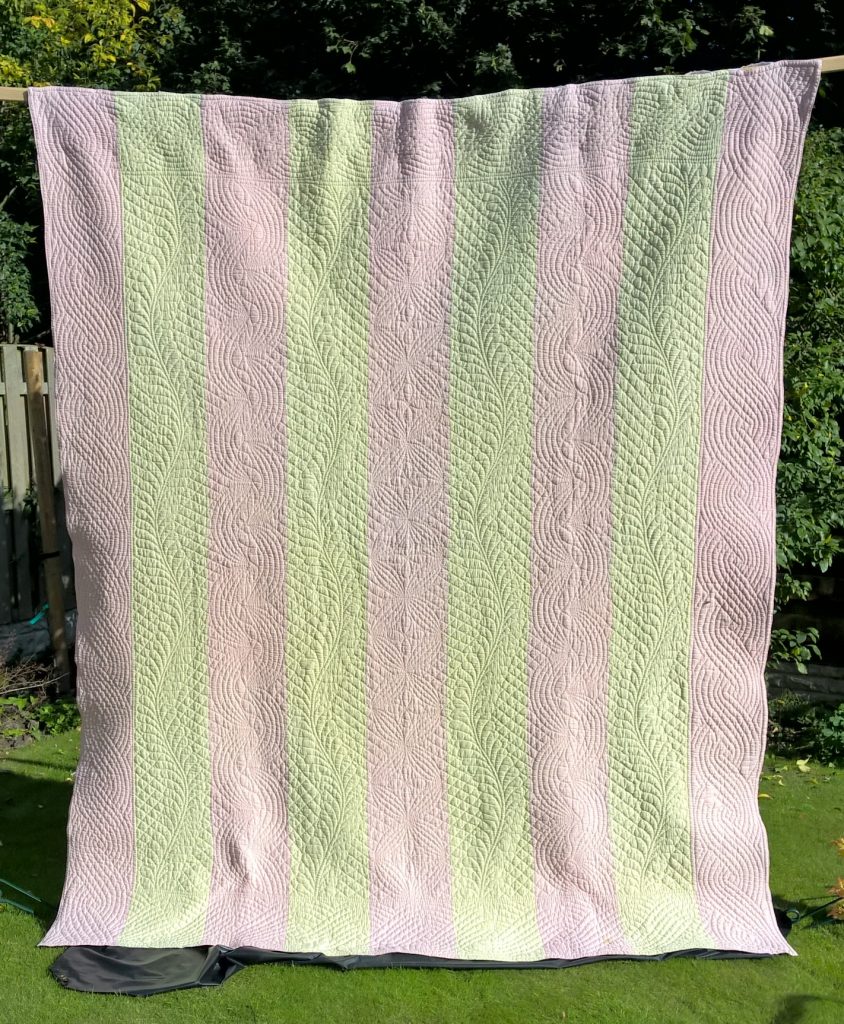
The example above dates from the 1930s when these pastel colours were very popular. Click for more information and examples of Strippy quilts.
Corded quilting
A type of quilting rarely done now is corded quilting.
Click to see a beautiful 18th century example with an intriguing history.
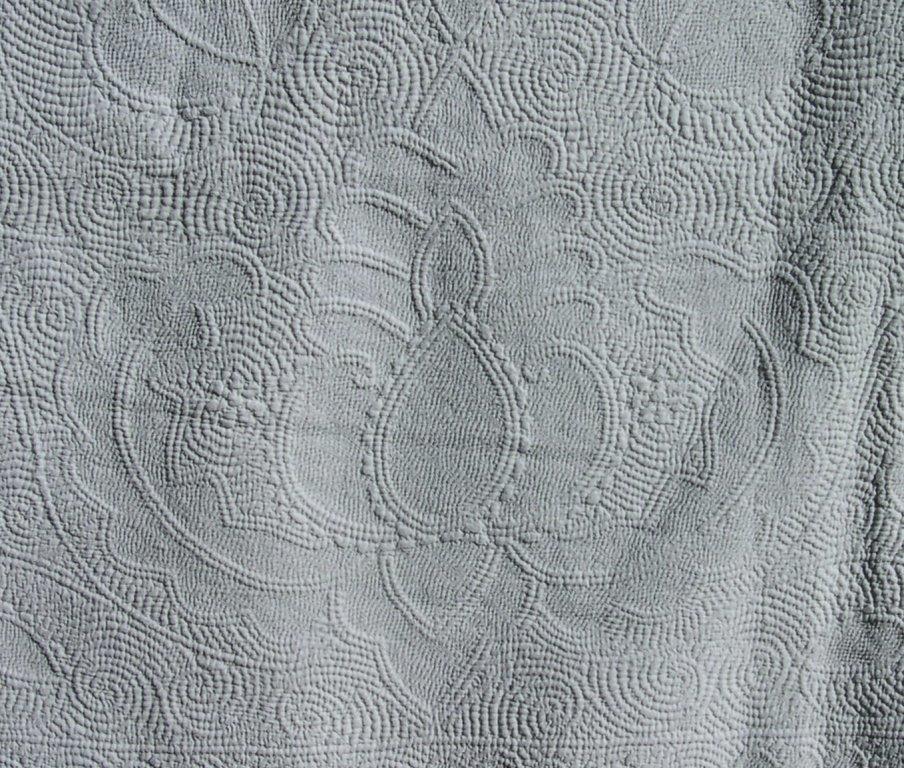
I am gradually adding more pages about the many antique quilts I own. If you would like to be kept in touch when other quilts come on line, then why not sign up for my occasional Newsletter (see link in Menu on left)?
If you are interested in the heritage of British quilting, then why not look at the extensive collection owned by the Quilters Guild of the British Isles?
For those particularly interested in studying more, the British Quilt Study Group is to be recommended.
